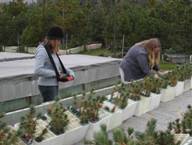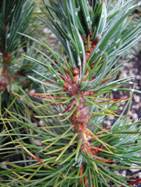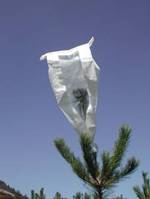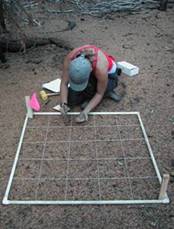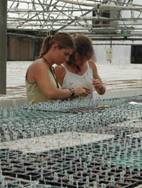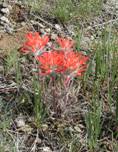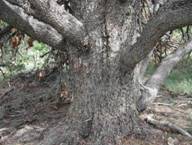RESEARCH SUMMARY
 Research and monitoring efforts are currently underway related to high elevation pines and threats that jeopardize them. Past research, monitoring, and experience have contributed significantly to our understanding and ability to address threats. However, much more work is needed to increase our ability to sustain, protect, and restore these unique ecosystems.
Research and monitoring efforts are currently underway related to high elevation pines and threats that jeopardize them. Past research, monitoring, and experience have contributed significantly to our understanding and ability to address threats. However, much more work is needed to increase our ability to sustain, protect, and restore these unique ecosystems.
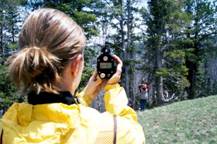 The research and monitoring that is being carried out is multidisciplinary with many contributions coming from various areas such as:
The research and monitoring that is being carried out is multidisciplinary with many contributions coming from various areas such as:
- Ecology
- Plant physiology
- Integrated genetics
- Plant pathology
- Entomology
- Meteorology
- Silviculture, and ecosystem restoration studies among others.
There is a pressing need to more fully integrate information from many areas of study to enhance our understanding and ability to respond.
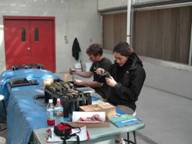 Each of the links provides a brief and basic description of some related research areas. It is a very simplified overview of research and monitoring pertaining to high elevation white pines.
Each of the links provides a brief and basic description of some related research areas. It is a very simplified overview of research and monitoring pertaining to high elevation white pines.
Dorena - rust resistance screening
Forest Genetics
Center for Forest Gene Conservation
High elevation white pines of the Rockies projects
White pine rust related projects
Rustbusters meeting info
Moscow research science lab
The forest tree genome project
Monitoring
Aerial survey and remote sensing
Hazard criteria, models, and risk maps
Genetics
Colonization/Regeneration
Geographic Patterns of Local Adaptations
Alternate hosts
Meteorological
Dendrochronology
Pathology
Bark Beetles
Database
Monitoring
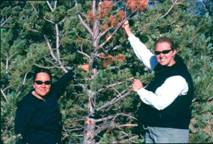 Monitoring refers to collecting information in a systematic and ongoing fashion. There are many uses for monitoring high elevation white pine ecosystems both in advance of major catastrophic events and after.
Monitoring refers to collecting information in a systematic and ongoing fashion. There are many uses for monitoring high elevation white pine ecosystems both in advance of major catastrophic events and after.
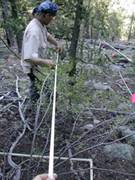 Essentially, monitoring data can give an account of the status of the ecosystem at the time of measurement. Past measurement compared to current are useful contrasts for assessing trends. In addition the information can be analyzed to determine the ecological and economic impacts of changes associated with threats or natural processes.
Essentially, monitoring data can give an account of the status of the ecosystem at the time of measurement. Past measurement compared to current are useful contrasts for assessing trends. In addition the information can be analyzed to determine the ecological and economic impacts of changes associated with threats or natural processes.
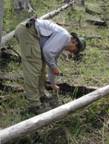 In order to collect information in a more uniform and meaningful fashion some scientists have developed criteria, a set of standards for specific types of monitoring. This helps to standardize and collect a more cohesive body of information. Monitoring protocols for whitebark pine have recently been developed (pdf).
In order to collect information in a more uniform and meaningful fashion some scientists have developed criteria, a set of standards for specific types of monitoring. This helps to standardize and collect a more cohesive body of information. Monitoring protocols for whitebark pine have recently been developed (pdf).
Just a few examples of applications where monitoring is, or could be, used are:
- To determine the severity of impacts of threats on high elevation ecosystems,
- To assess tree survival rates in relation to rust, beetles and dwarf mistletoe and other threats.
- To assess changes in general forest conditions
- To measure rust occurrence, spread, and intensification behavior
- To prioritize areas for restoration
- To assess the outcome of restoration efforts
In the future:
- To assess the survival of natural regeneration compared to genetic resistant seedlings
This fundamental information collected from the field can be used in conjunction with aerial and remote sensing techniques. More details (Link to aerial survey and remote sensing information) Sources: 111, 109, 85
back to listAerial survey and remote sensing
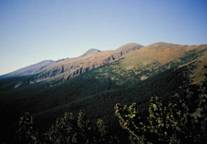 Remote sensing is a way of collecting information about an area through the use of airborne equipment and techniques (e.g., photographs from aircraft and satellite). This method can be a very cost effective and an efficient way to assess large areas, especially those that are extremely hard to access.
Remote sensing is a way of collecting information about an area through the use of airborne equipment and techniques (e.g., photographs from aircraft and satellite). This method can be a very cost effective and an efficient way to assess large areas, especially those that are extremely hard to access.
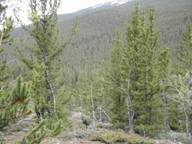 Remotely sensed information together with ground verification has proven to be an excellent monitoring tool to assess trends on a landscape level. For instance in the Colorado Rocky Mountains, natural resource professionals are carrying out a remote sensing project to look at areas of concentrated limber pine mortality.
Remotely sensed information together with ground verification has proven to be an excellent monitoring tool to assess trends on a landscape level. For instance in the Colorado Rocky Mountains, natural resource professionals are carrying out a remote sensing project to look at areas of concentrated limber pine mortality. 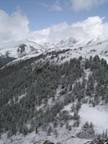 They are comparing data from aerial survey to other remotely sensed data and field data to see if there are ways to help identify white pine blister rust infections more efficiently and effectively.
They are comparing data from aerial survey to other remotely sensed data and field data to see if there are ways to help identify white pine blister rust infections more efficiently and effectively.
Sources: 109,110
Hazard criteria, models, and risk maps
Identifying hazard criteria is an effort to describe factors that contribute to the probability of occurrence, the severity, and/or the geographic extent of a given threat like white pine blister rust and/or a bark beetle infestation. Some hazard criteria that have been identified for blister rust infections at high elevation include:
- weather
- climate conditions
- elevation
- topographic position as well as the distance and proximity of Ribes
- water sources
- current infections
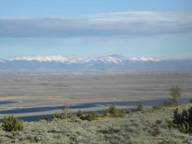 Hazard maps are frequently used to display hazard identification data. Maps help to describe what areas may be most vulnerable to a given threat. They also serve as an excellent tool in prioritizing areas for monitoring and selecting sites for research or restoration projects. Hazard maps can be critically important in management planning and decision making at local to national scales.
Hazard maps are frequently used to display hazard identification data. Maps help to describe what areas may be most vulnerable to a given threat. They also serve as an excellent tool in prioritizing areas for monitoring and selecting sites for research or restoration projects. Hazard maps can be critically important in management planning and decision making at local to national scales.
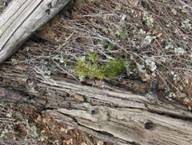 Estimations and predictions through quantitative analysis (i.e. mathematical models) of risk criteria can help describe potential outcomes, losses, costs, increases in intensity, etc. There are many applications for models and the output is quite varied. They can be used to assess the long term ecological and/or economic impacts that may be sustained in a geographic area over a given period. They can also be used to select the best sites for planting and maintaining white pines.
Estimations and predictions through quantitative analysis (i.e. mathematical models) of risk criteria can help describe potential outcomes, losses, costs, increases in intensity, etc. There are many applications for models and the output is quite varied. They can be used to assess the long term ecological and/or economic impacts that may be sustained in a geographic area over a given period. They can also be used to select the best sites for planting and maintaining white pines.
Sources: 105,106,111,109, 85
back to listGenetics
Rust resistance screening and breeding
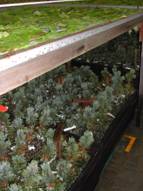 Rust resistance screening projects estimate frequency of rust resistance in a population and/or identify individuals and families that have genetic (heritable) resistance to the rust. This information can be used to understand why some individual trees have not developed white pine blister rust under natural conditions and enables scientists to distinguish which trees have escaped infection and which are in some way resistant infection and why.
Rust resistance screening projects estimate frequency of rust resistance in a population and/or identify individuals and families that have genetic (heritable) resistance to the rust. This information can be used to understand why some individual trees have not developed white pine blister rust under natural conditions and enables scientists to distinguish which trees have escaped infection and which are in some way resistant infection and why.
One focus of rust resistance screening is to identify the types of genetic resistance naturally present in white pine forests. Once resistant individuals are identified researchers can study more in depth the genetic traits and/or mechanisms that help these trees resist infection or survive with the disease. These resistant individuals can be used in breeding programs. Past studies of low elevation white pine species indicate that several different mechanisms can be present in resistant trees.
Another aspect of this work is developing rust resistant trees while retaining the genetic diversity within the species for use in restoration efforts. Trees that demonstrate a mixture of resistance mechanisms are bred in seed orchards. This breeding work can help to further increase resistance, and seed from these resistant trees can help meet the restoration and reforestation needs.
Information gained in these studies can be used to understand why some individual trees have not developed white pine blister rust under natural conditions and enables scientists to distinguish which trees have escaped infection and which are in some way resistant infection and why.
Additional genetics related work
- Genetics of Ribes - Rust resistance screening and breeding continues to be done with the alternate host species of white pine blister rust, currants and gooseberries (Ribes).
- Genetics of Cronartium ribicola (White Pine Blister Rust) - Some scientists are examining genetic variation in the rust fungus including the potential for new lines of the rust with differences in virulence, aggressiveness and adaptation to different climates.
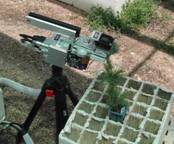
- Linkages of Genetic Resistant to Other Important Traits/Factors - There are efforts to evaluate the relationship and linkages of resistance mechanisms to important survival (stress tolerance) and growth traits as well as identify environmental factors affecting these characteristics.
- Interactions of Resistance with Other Threat Agents - Some researchers are assessing the relationship of other damaging agents like bark beetles and dwarf mistletoe with rust resistance.
Sources: 1, 115, 85
back to listColonization/Regeneration
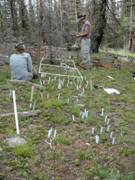 Some scientists are studying the conditions and factors leading to successful regeneration and/or colonization of these high elevation white pines. It is known that seedlings of these pines are adapted to growing in intense conditions such as the interior of burns or places with extreme site and climate factors. Yet, there are still many questions about what is it that consitiutes favorable regeneration sites.
Some scientists are studying the conditions and factors leading to successful regeneration and/or colonization of these high elevation white pines. It is known that seedlings of these pines are adapted to growing in intense conditions such as the interior of burns or places with extreme site and climate factors. Yet, there are still many questions about what is it that consitiutes favorable regeneration sites.
Some of the major factors that scientists are interested in understanding more about in relation to regeneration and colonization of high elevation white pines are:
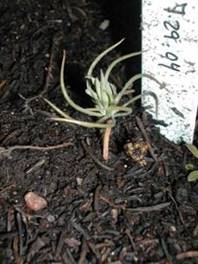 Factoring affecting seed production
Factoring affecting seed production - Frequency and location of regeneration (where and when)
- Types of disturbances are suitable to support regeneration
- Impact of soil nutrients and water interactions
- Effect of competition from other species
- Influence of climate and habitat
- Infulence of macro and micro site factors influence
- Impact of fire history
- Influence of stand age structure
- Planting protocols
- Feasibility of direct seeding
Studies on these topics are essential to increase our ability to develop guidelines for silvicultural treatments to promote white pine establishment and develop techniques to successfully regenerate species at high elevation, naturally or from nursery stock or seeds.
Sources: 1, 109,116
Geographic Patterns of Local Adaptations
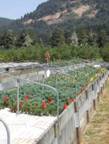 Researchers are trying to gain a better understanding of local adaptation in high elevation white pines. This involves measuring and quantifying variation in growth and physiological traits among different seed sources.
Researchers are trying to gain a better understanding of local adaptation in high elevation white pines. This involves measuring and quantifying variation in growth and physiological traits among different seed sources.
One way of looking at this variation in traits is through seedling common garden studies. Gardens can be used to assess range wide genetic variation in quantitative traits that may reflect local adaptation.
Ultimately this information can be used to assess transferability and limiting factors for movement of high elevation pines while setting some appropriate seed transfer guidelines for restoration planting to avoid planting trees in sites to which they are not adapted.
back to listAlternate hosts
Currants and Gooseberries (Ribes)
 Scientists are engaged in ventures to understand the role of currants and gooseberries (Ribes ssp.) in blister rust incidence and severity in high elevation white pines. Some specific areas include efforts:
Scientists are engaged in ventures to understand the role of currants and gooseberries (Ribes ssp.) in blister rust incidence and severity in high elevation white pines. Some specific areas include efforts:
- To understand the role and mechanics of Ribes in maintaining and spreading blister rust through examination of Ribes specific ecology, distribution and phenology (timing, seasonality) in relation to other important factors.
- To explain variation in Ribes susceptibility to blister rust infections by species and region and develop plants that will resist infection.
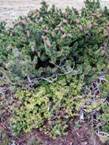 To create more reliable method for identifying white pine blister rust on Ribes species. See More
To create more reliable method for identifying white pine blister rust on Ribes species. See More - To determine the impact of fire, prescribed burns, thinning, and other management or restoration activities on quantity and species of Ribes that regenerate
Other hosts
Most commonly the life cycle of white pine blister rust requires alternation between white pines and currant and gooseberries (Ribes). Other plants species however have been found to serve as alternate hosts for white pine blister rust. Some examples include hemiparasitic members of Scrophulariaceae family like Castilleja and Pedicularis (e.g. Indian Paint Brush and Snapdragon).
Sources: 107, 108
back to listMeteorological
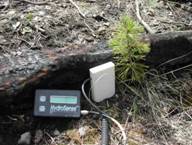 Some scientists are moving towards a better understanding of how weather, temperature, precipitation, soil moisture, elevation, and humidity factors contribute to the occurrence or intensify the impact of threats like bark beetles or blister rust. Weather stations are a useful tool to assess and monitor meteorological conditions.
Some scientists are moving towards a better understanding of how weather, temperature, precipitation, soil moisture, elevation, and humidity factors contribute to the occurrence or intensify the impact of threats like bark beetles or blister rust. Weather stations are a useful tool to assess and monitor meteorological conditions.
One area of specific research is looking at the favorable wind patterns and ground conditions that contribute to rust dispersal over short and long distances. Understanding how and when spores are dispersed is helping to explain how the disease moves and can help to calculate where the disease may infect trees in the future.
Sources: 111
back to listDendrochronology
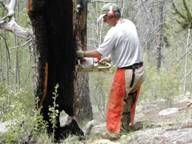 Dendrochronology research is the study of past events and climate change by comparing the consecutive annual growth rings of trees. The high elevation white pines, especially bristlecone pines, are among the oldest living things on earth. A single bristlecone pine tree can live to be thousands of years old, therefore contributes an extraordinarily long chronology of tree ring information.
Dendrochronology research is the study of past events and climate change by comparing the consecutive annual growth rings of trees. The high elevation white pines, especially bristlecone pines, are among the oldest living things on earth. A single bristlecone pine tree can live to be thousands of years old, therefore contributes an extraordinarily long chronology of tree ring information.
 Tree - ring analysis has and continues to be used to draw conclusions about pollution, disease, fire and even temperature and precipitation cycles from the past. Information gathered from bristlecone pines through tree ring analysis has been instrumental in the recalibration of the Carbon - 14 dating system. They have served as historical record to support conclusions made through other means such as pollen information, sediment cores, archaeological information, etc.
Tree - ring analysis has and continues to be used to draw conclusions about pollution, disease, fire and even temperature and precipitation cycles from the past. Information gathered from bristlecone pines through tree ring analysis has been instrumental in the recalibration of the Carbon - 14 dating system. They have served as historical record to support conclusions made through other means such as pollen information, sediment cores, archaeological information, etc.
Pathology
 Many studies are focused directly on increasing our understanding of the white pine blister rust pathogen. This may involve trying to quantify the relationship of the pathogen to the various high elevation white pine hosts in
Many studies are focused directly on increasing our understanding of the white pine blister rust pathogen. This may involve trying to quantify the relationship of the pathogen to the various high elevation white pine hosts in terms of the degree of harmfulness (virulence) and specific patterns in each host.
Scientists
are interested in how the pathogen adapts to unique environments especially those found at high elevation.
terms of the degree of harmfulness (virulence) and specific patterns in each host.
Scientists
are interested in how the pathogen adapts to unique environments especially those found at high elevation.
Bark Beetles
Researcher are conducting a variety of studies to gain a better understanding of bark beetles in high elevation systems. Some studies have looked at the distribution of attacks in relation to whitebark pine restoration treatment areas. Other studies are looking at potential range shifts under climate change and the implications for bark beetle infestations in the future.
back to listDatabase
As more and more information is gathered on high elevation white pines a greater  need arises for stable, reliable, and uniform data management systems. One collaborative effort that is currently underway is the creation of a database of distribution and condition of whitebark and limber pine. The final goal is to create a database of basic whitebark and limber pine parameters that can be queried.
need arises for stable, reliable, and uniform data management systems. One collaborative effort that is currently underway is the creation of a database of distribution and condition of whitebark and limber pine. The final goal is to create a database of basic whitebark and limber pine parameters that can be queried.

